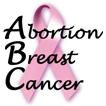Reproductive History & Breast Cancer Risk
Reproductive History &
Breast Cancer Risk
During a normal pregnancy, estrogen levels rise 2000% by the end of the 1st trimester. During the first 2 trimesters, the breast grows because there is an increase in the number of immature type 1 and 2 lobules. During the 3rd trimester, the breast stops growing but lobules mature into Type 3 & 4 lobules. During the growth phase of pregnancy, the breasts become sore and tender.
Sometimes, a woman will miscarry during the first trimester. These miscarriages (spontaneous abortions) do not increase breast cancer risk, since they are associated with low estrogen levels that do not cause breast growth. Many times women who miscarry will say they never felt pregnant because their breasts did not change and they did not get nauseous from high estrogen levels. However, miscarriages in the 2nd trimester can increase risk.
A first trimester miscarriage is quite a different situation from induced abortion of a normal pregnancy in its effect on the woman’s breasts. The longer a woman is pregnant before an induced abortion, the higher her risk of breast cancer. This is because high estrogen levels of the 1st and 2nd trimesters cause breast growth of type 1 & 2 lobules. When her pregnancy is terminated before the breast cells reach full maturity, she is left with more immature type 1 & 2 breast lobules than before her pregnancy started, and therefore is at increased risk. Her breasts never mature to type 3 & 4 lobules, which would have occurred in the 3rd trimester and would have lowered her risk. This risk is especially high for teenagers who have an abortion in the late 1st or 2nd trimester and for those women who have never have a child, since their breasts never mature. Premature deliveries before 32 weeks are known to double breast cancer risk.
A teenager, who has an abortion between 9 and 24 weeks, has a 30% chance of developing breast cancer in her lifetime. If that same teenager also has a family history of breast cancer, the risk increases so much that one study showed all such women developed breast cancer by the age of 45.
References:
1. Lanfranchi A & Fagan P. Breast cancer and induced abortion: A comprehensive review of breast development and pathophysiology, the epidemiologic literature, and proposal for creation of databanks to elucidate all breast cancer risk factors. Issues in Law and Medicine 2014;29(1):1-133. Available here and at the Breast Cancer Prevention Institute .
2. Daling JR, Malone DE, Voigt LF, White E, Weiss NS. Risk of breast cancer among young women: relationship to induced abortion. J Natl Cancer Inst 1994;86:1584-1592. Available at: < http://jnci.oxfordjournals.org/content/86/21/1584 >.
3. White E, Malone KE, Weiss NS, Daling JR. Breast cancer among young US women in relation to oral contraceptive use. J Natl Cancer Inst 1994;86:505-514. Available at: < http://jnci.oxfordjournals.org/content/86/7/505.abstract >.

